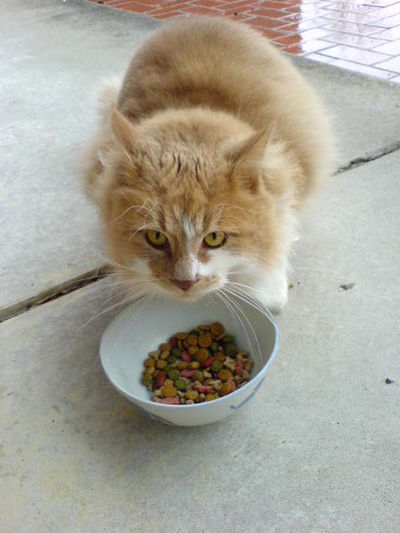
Cat Dietary Requirements
Veterinarian Reviewed on June 20, 2012 by Dr. Janice Huntingford
Cat Dietary Requirements
Cats are notorious for their finicky natures. When it comes to food, however, it is the owner’s responsibility to ensure they receive a balanced and nutritious diet free of unnecessary amounts of saturated fat. For some cat owners, this may be new information, thinking that all animals can survive off whatever is fed to them, whilst others have always known the importance of feeding our pets properly. Cats, however, have a unique need, as they are strictly carnivorous. This means that foods high in carbohydrates, sugars or other non-protein variations are not nutritious enough for our feline pets.
Association of American Feed Control Officials
A long time ago, very little research or thought was utilized in the manufacturing of cat food and thus resulted in products useless to the longevity of a cat’s life. However, in response to consumer demand and need, the AAFCO (Association of American Feed Control Officials) was formed as a means to regulate the pet food industry.
This association’s main goal is to publish and conduct the necessary trials and literature regarding proper feeding and ingredient needs for pet food. The work of this system is still an ongoing process and although much has been learned in a short amount of time, the relevance and importance of certain nutritional values and levels are still being investigated.
Recommendations made by this organization can change when the conclusions from certain research and investigations have been altered due to shifting information. Currently, minimum levels of nutrient intake are generally listed while excess amount that can cause damage are also included in the guidelines. This system is quite similar to The USDA in terms of balanced nutritional needs for children or adults.
What to look for
As a pet owner, it is important to actively seek out products that carry the statement “Formulated to meet the AAFCO Cat Food Nutrient Profile” as these are the only items that follow the guidelines implemented by this organization. Remember, it is not a law requirement to follow the guidelines, so purchasing items sans this statement could mean risking the health of your feline pet!
The AAFCO nutrient list is placed into two categories – growing (such as a Kitten Diet), pregnant, or lactating cats; and another for adult maintenance. The profiles are based in terms of dry matter and thus moisture content should be taken into account if you are comparing products (particularly dry food and wet food). For example, if the food has 75% moisture then the remaining nutritional value is 25%. Taking the amount of nutrients and dividing it by a fourth (the remaining 25%) will result in an accurate dry matter amount for comparison to nutrient guidelines or other products.
Feline nutritional needs
Meeting the nutritional demands of our cats takes time and a lot of consideration. Be sure to purchase items high in protein that contain no additives or preservatives. A lot of owners are also opting to prepare their cat’s meals themselves at home to ensure the consumption of the proper nutrients, as well as avoiding Cat Food Allergies. If you do this, however, be sure to speak with your veterinarian to ascertain that the ingredients you use will keep your cat happy and healthy.
Sign up for our newsletter and receive more articles and the latest pet health updates and special offers.
Our Expert
 Dr. Janice Huntingford
Dr. Janice HuntingfordJanice Huntingford, DVM, has been in veterinary practice for over 30 years and has founded two veterinary clinics since receiving her Doctor of Veterinary Medicine at the Ontario Veterinary College, University of Guelph. She has studied extensively in both conventional and holistic modalities. Ask Dr. Jan

